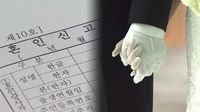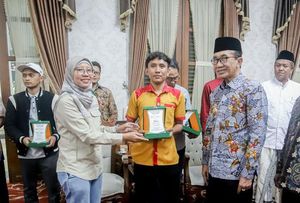South Korea's Statistics Office has revealed a significant surge in marriage registrations for 2024, presenting a promising trend for the nation's social landscape. The newly released data indicates that in 2024, there were 222,000 marriage registrations, reflecting an increase of 29,000 couples from the previous year. This increase marks a historic achievement, being the largest growth in nearly 28 years, a revitalizing sign for a country that has faced its share of demographic challenges.
According to the data released on March 20, 2025, the number of marriages recorded not only surpassed the previous year’s figures but also represented the highest tally since 2019. Back then, the records indicated 239,000 couples entering into matrimony, with the latest figures showcasing the largest increase since 1996 when only 36,000 marriages were registered.
The growth rate of 14.8% in marriage registrations is especially noteworthy as it represents the highest recorded percentage since statistics began in 1970. Analysts at the statistical office attribute this vibrant upswing primarily to the increasing population in the thirty-something age group, as well as a rebound effect from the COVID-19 pandemic that had previously skewed marriage rates downward.
Furthermore, cultural shifts in societal attitudes towards marriage are being credited for this positive change, alongside supportive government policies aiming to bolster family formation. These factors combined appear to have reignited interest in marriage among young adults in the country.
In contrast with the surge in marriage registrations, the data surrounding divorces paints a less optimistic picture, albeit with a silver lining. The number of divorce registrations stood at 91,000, which is a decrease of 1,000 couples from the year before, yielding an overall drop of 1.3%. This marks the fifth consecutive year of decline in divorce rates, a trend that could suggest shifting perceptions around long-term relationships and family stability.
In-depth analysis of the marriage registration data reveals that cross-border marriages also saw a minor uptick, rising by 1,000 couples—an increase of 5.3% from the previous year. However, these cross-border marriages accounted for a corresponding decline in their proportion of total registrations, now standing at 9.3%. This decrease in proportion suggests that while the absolute number of cross-border marriages increased, they are becoming a smaller part of the overall marriage landscape.
The statistics highlight the diversity of foreign brides and grooms entering the South Korean marriage market. Among foreign brides, Vietnamese nationals predominate, accounting for 32.1%. This is followed by brides from China at 16.7% and from Thailand at 13.7%. On the other hand, for foreign grooms, United States nationals lead the way with 28.8%, followed by Chinese nationals and Vietnamese nationals at 17.6% and 15%, respectively.
Overall, the data reflects a unique moment in South Korea's marriage trends, with the increase in marriage registrations offsetting a steady decline in divorces, suggesting a potential cultural renaissance concerning family and partnership. The Statistics Office's findings encourage optimism as South Korea navigates its way through various demographic challenges, paving a new path towards family growth in the coming years.
This development is particularly significant for a society grappling with an aging population and declining birth rates, where the vitality of marriage and family is of utmost importance to social stability. As wedding bells ring louder through the nation, the impacts on societal norms and future generations will undoubtedly be profound.




